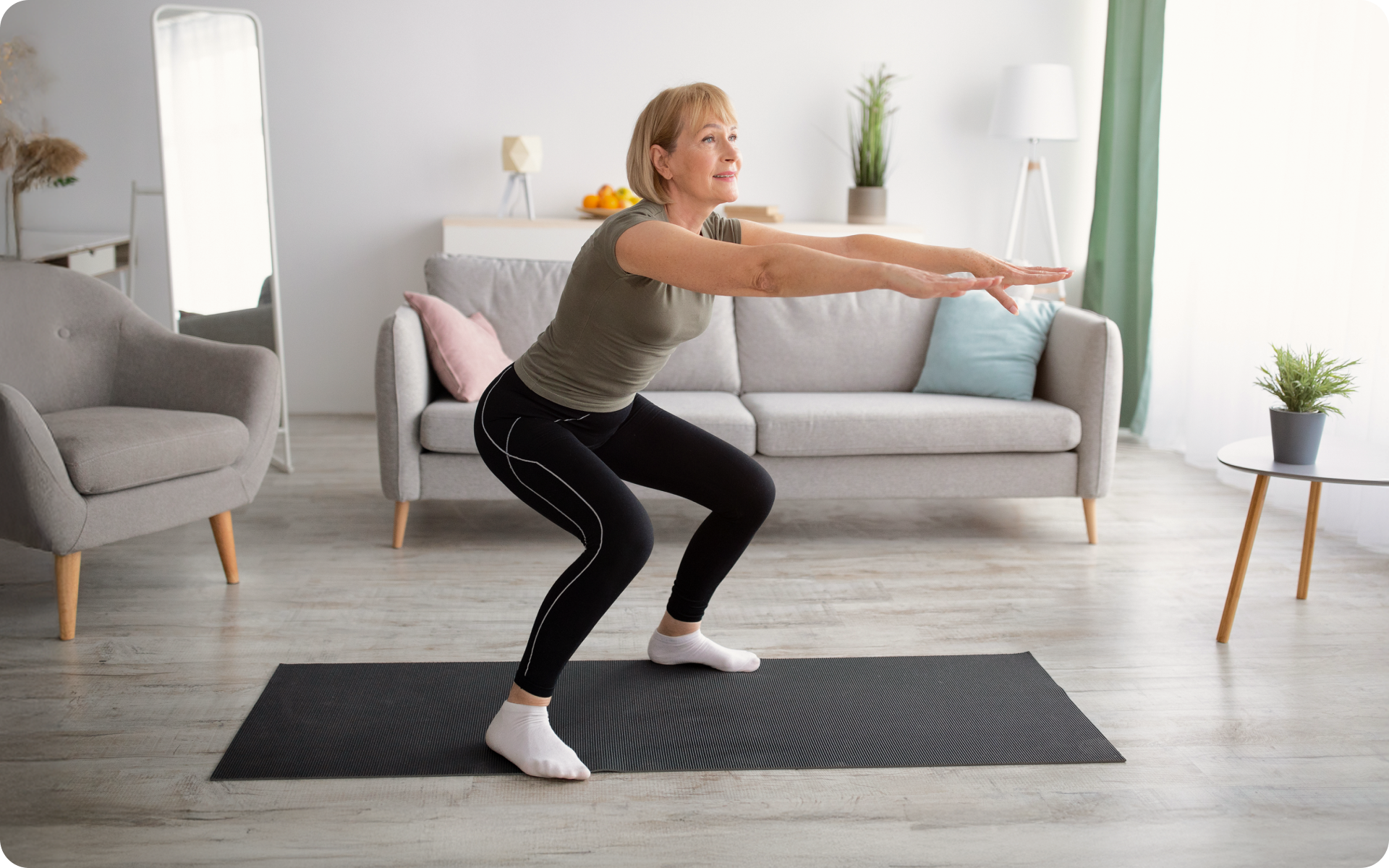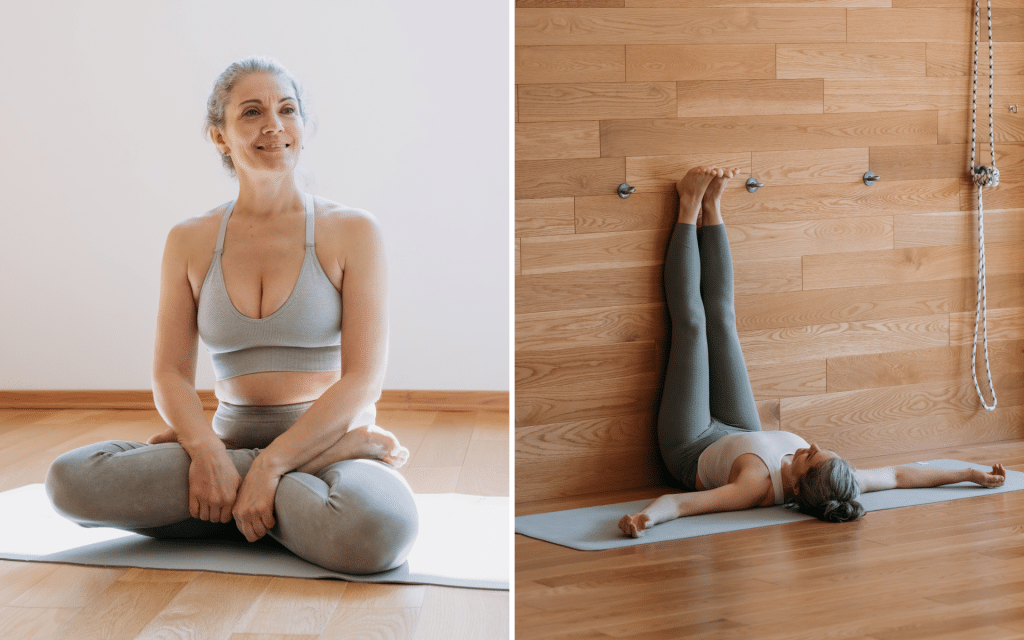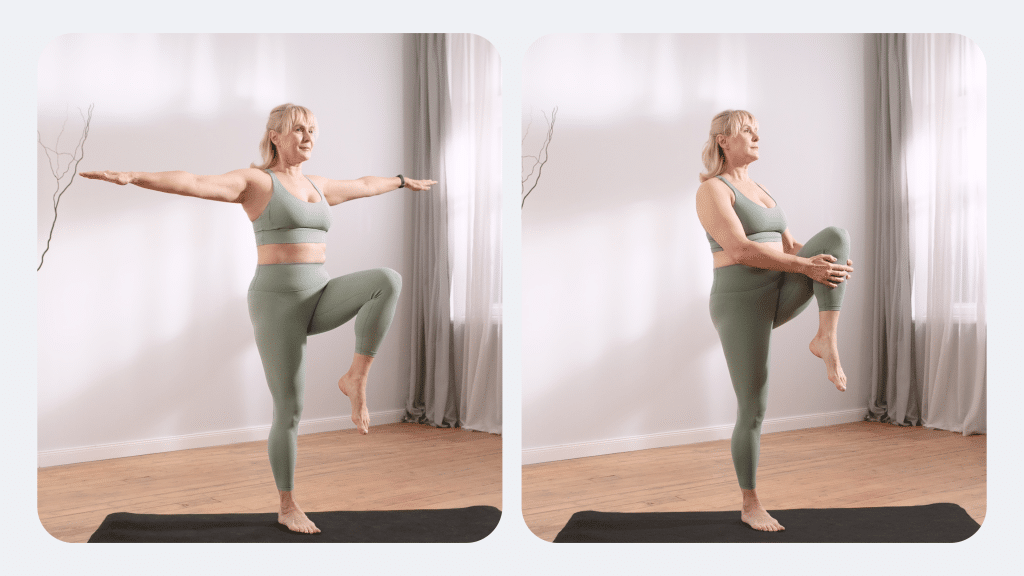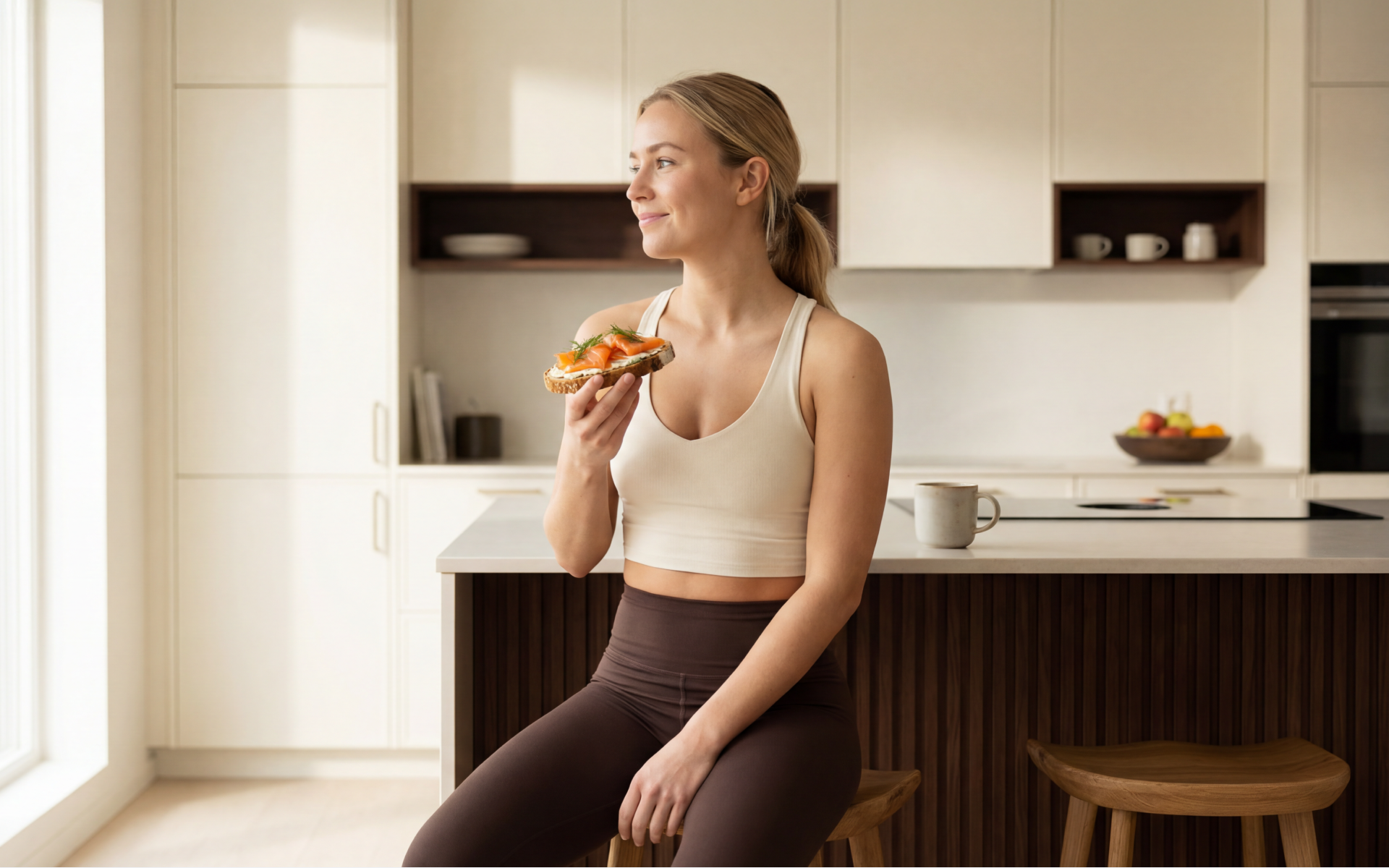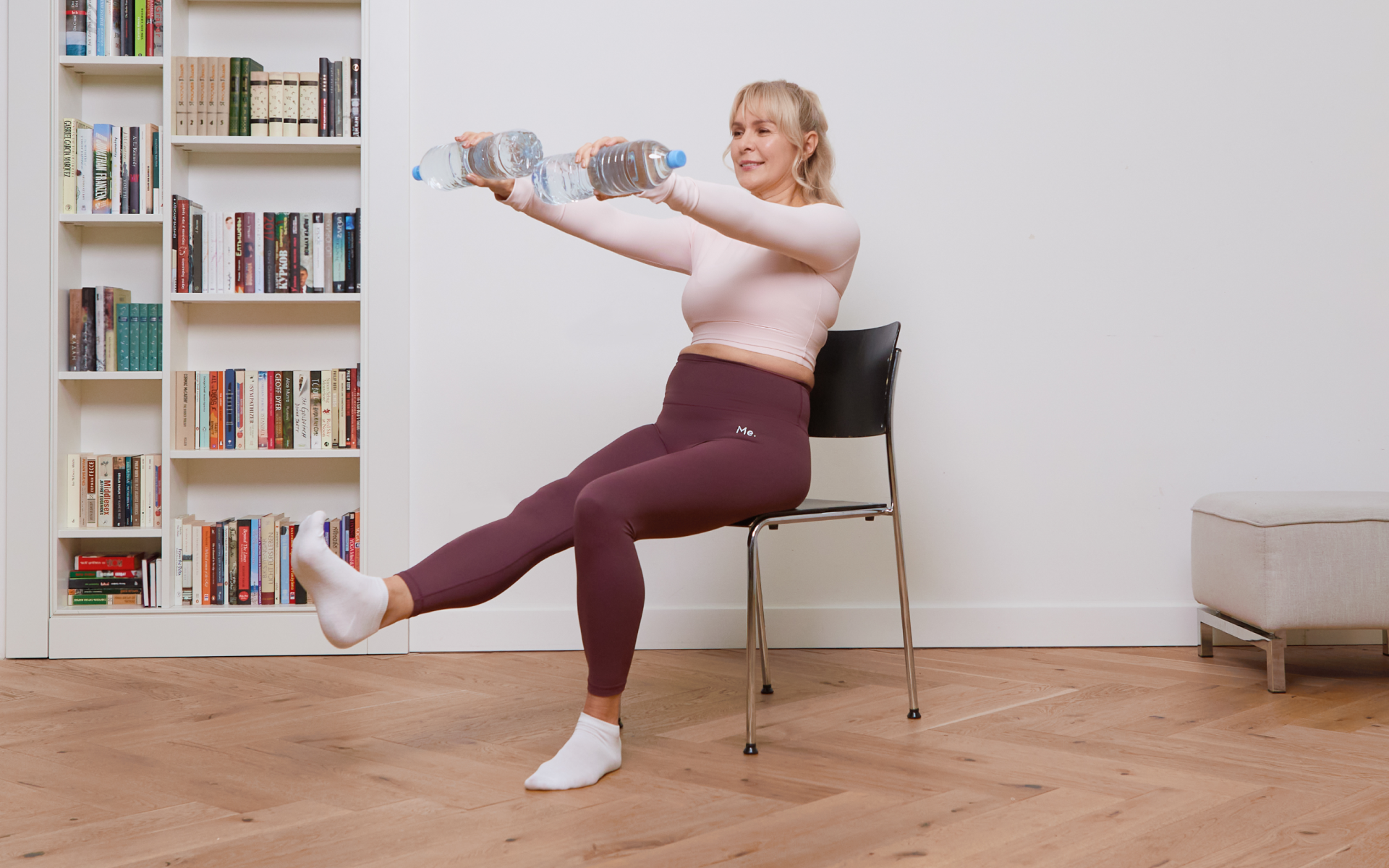The question of how women can gain muscle after age 50 is one that many older women who are looking to improve their fitness find themselves asking.
Building muscle has multiple benefits. In addition to helping reduce body fat, it can also help improve self-esteem, increase bone density and metabolic rate, lower LDL cholesterol and resting blood pressure, and much more (1).
Unfortunately, however, building muscle becomes harder the older you get. By the time you hit 30, your body starts to lose 3% to 5% of muscle mass each passing decade, and once you hit 50, this number increases to 5% to 10% (2, 3).
The good news is just because something is hard, doesn’t mean it’s impossible. Read on to learn what you should be eating for muscle growth after 50, as well as lifestyle and workout tips to make this goal a reality.
Can a 50-Year-Old Woman Build Muscles?
Yes, she can. With the right dietary changes and strength training program, a 50-year-old woman (or someone older) can build and maintain muscle mass.
What Is the Secret to Building Muscle After 50?
The secret isn’t really a secret. Building muscle after age 50 requires a healthy, high-protein diet and a good strength training workout routine.
A High-Protein Diet
A healthy diet consists of the 3 main macronutrients: carbohydrates, fats, and protein. Of these, protein stands out above the rest in terms of helping you gain muscle mass and strength. This fact has been proven by multiple studies over the years. For example:
-
2015
In a study published in the Sports Medicine journal, researchers found that untrained individuals may not see the effects of protein consumption during the initial weeks of their program. However, as resistance training duration, frequency, and volume increase, protein supplementation can promote muscle hypertrophy and strength gains in both untrained and trained individuals (4).
-
2017
In a systematic review published in the British Journal of Sports Medicine researchers looked at more than 49 studies with over 1,800 participants and found that a higher protein intake helped with significant positive changes in muscle strength, muscle size, and the reduction of fat-free mass. The researchers also found that the intake of 1.6 g of protein per kg of body weight per day seemed to be the ideal intake of this macronutrient (5).
-
2018
This study emphasized the importance of a high protein intake for muscle gain, especially when combined with resistance training. Researchers recommended having protein meals spaced out by three to five hours as this increases muscle protein synthesis.
They also stated that if doing strength training, protein intake should be 1.6 g/kg/day. If having three meals a day, each meal should have approximately 0.53 g/kg protein, but if having 4 meals a day, each plate should contain 0.4g/kg protein (6).
-
2020
A review of 105 articles published in the Nutrition Reviews journal found that a higher protein intake, by even as little as 0.1 g of protein per kg of body weight per day, helped increase lean body mass. This study stated that the ideal protein intake was 1.3g/kg of body weight/day (7).
-
2022
In this systematic review, researchers found that increased protein intake increased muscle strength, particularly when resistance training was involved. Researchers also suggested that the ideal intake for this result may be 1.5 g/kg BW/day (8).
From these studies, it can be seen that a high-protein diet is essential for building muscle mass and strength.
Please Note:
If you’re currently at your ideal weight and want to gain more muscle, make sure to eat at a calorie surplus of an extra 300 to 500 calories a day. This helps give your body ample fuel to keep up with the routine needed to increase muscle mass.
Take a look at this article for the best vitamins for women over 50.
Strength Training Workout Routine
There are four main types of exercises that everyone, regardless of their age, should be doing as part of a well-rounded workout routine (9):
- Endurance, aka aerobic or cardio workouts, which include walking, swimming, cycling, and dancing. This category helps improve the health of your heart, lungs, and circulatory system.
- Balance exercises, as the name suggests, help improve balance. This is the key to preventing injury during a workout and also prevents falls, which is particularly important for seniors. Chair yoga for women over 50 is a great example that can help improve balance in older women.
- Flexibility exercises simply refer to stretching workouts that help boost flexibility.
- Strength training, which is also known as resistance training, is the key to improving your muscle mass as a 50-year-old woman. Resistance training can be done with the use of weights, i.e. weight training/lifting, with the help of resistance bands, or with just your body weight.
In addition to helping you gain muscle, studies have shown that when older adults engage in resistance training exercises, they can also reap other benefits, including improved muscle quality and performance, improved functional mobility and quality of life, increased metabolic rate, better body composition, chronic disease management, independence, better mental health, and improved gait speed (10, 11, 12, 13).
Read more: The Top 6 Benefits of Chair Yoga for Seniors
How Often Should a 50-Year-Old Woman Lift Weights?
The Centers for Disease Control and Prevention recommends that older adults should get at least 150 minutes of exercise a week, which translates to around 30 minutes of exercise 5 days a week. They also add that two out of these 5 days should also include muscle-strengthening exercises (14).
From these guidelines, it can be concluded that at the minimum, a 50-year-old woman should do weight-lifting exercises twice a week.
However, if you feel like two days is too little and you want to push yourself, then by all means, feel free to do it more often. A study published in 2011 found that healthy older people looking to improve their muscle mass and strength should train 3 to 4 times a week to see the best results (15).
Remember, you can always push yourself, but don’t overdo your exercise routine as this may lead to injury or overtraining.
Reasons why BetterMe is a safe bet: a wide range of calorie-blasting workouts, finger-licking recipes, 24/7 support, challenges that’ll keep you on your best game, and that just scratches the surface! Start using our app and watch the magic happen.
How to Gain Muscle After 50: Exercises
If you’re wondering which workouts will help you gain muscle at home or at the gym, the answer is strength training workouts. Examples of such exercises include:
- Squats – basic squats, sumo squats, goblet squats, jump squats, etc.
- Lunges – Forward and reverse lunges, walking lunges, lateral lunges, curtsy lunges, etc.
- Bicep curls
- Pull-ups
- Tricep dips
- Forearm planks and other plank variations
- Glute bridges
- Push-ups
If you’re doing these exercises at home without access to gym equipment, you can simply use your body weight or add some resistance with resistance bands or DIY weights.
For those with access to a gym, your body weight is enough to give you results, but you can always push your limits through the use of free weights and any gym machinery available to you.
Check out this article for the 3 best exercises to lose belly fat after 50 for women.
How Much Protein Is Needed to Build Muscle After 50?
Protein intake for muscle mass and growth isn’t determined by age, but by your end goal. As noted in the ‘high-protein diet’ section above, researchers recommend an intake of up to 1.6g of this macronutrient per kg of body weight per day together with resistance training to get the best muscle-building results.
Some high-protein food sources for your healthy diet include:
- Lean meats, poultry, and fish
- Legumes such as dry beans and peas
- Tofu
- Eggs
- Nuts and seeds
- Milk and milk products such as cheese and yogurt
- Whole grains, some vegetables, and some fruits. Note that these provide only small amounts of protein relative to the other sources mentioned above.
When it comes to weight loss, progress is made by inches, not miles, so it’s much harder to track and a lot easier to give up. The BetterMe: Health Coaching app is your personal trainer, nutritionist, and support system all in one. Start using our app to stay on track and hold yourself accountable!
What Is the Ideal Muscle Mass for a 50-Year-Old Woman?
There is no standardized number that tells us the ideal muscle mass percentage for people of different ages. However, a study published in 2000 looked at the average muscle mass percentages in adult men and women of different age groups.
For women between the ages of 36 and 55, the average percentage was 29 to 31%, and women aged 56 to 75 had an average muscle mass of between 27 and 30%. Using this number, we could say that women aged 50 who are looking to be very fit should aim to have a muscle mass percentage higher than 31% (16).
How Can a Woman over 50 Build Muscle and Lose Fat?
The strategy for building muscle remains the same, with one minor difference if you want to lose fat. As previously mentioned, building muscle calls for a high-protein diet with an intake of up to 1.6g/kg of body weight/day and a good and consistent strength training program.
However, for women who are looking to lose body fat, as well, the recommendation is to eat at a calorie deficit rather than a calorie surplus. Protein and strength training take care of the muscle-building and the calorie deficit helps achieve fat loss as eating less than the body needs increases stored fat burning.
The ideal calorie deficit involves lowering your average daily calorie intake by 500 to 750 calories (17).
After 50, you should be doing both cardio and weight lifting workouts, in addition to balance and flexibility exercises. As mentioned above, these four types of exercises give you a well-rounded routine that’s good for your muscle health, your cardiovascular health, and your well-being. Every 50-year-old woman should ensure she eats a balanced diet that’s made up of whole grains, lean animal and plant proteins, and healthy fats, in addition to a variety of fruits, leafy greens, and non-starchy vegetables. The Dietary Guidelines for Americans 2020-2025 also state that women aged 50 to 60 should consume between 1,800 and 2,200 calories a day, depending on their level of physical activity (18). Reducing your average daily calorie intake by 500 to 750 calories may help you lose 1 lb a week. You should also endeavor to get enough sleep and exercise for at least 30 minutes a day as weight loss goes far beyond simply what you eat (19). According to the Dietary Guidelines for Americans 2020-2025, an adult who consumes 2,000 calories a day is allowed up to 3 cups of dairy per day (18).Frequently Asked Questions
Should I do cardio or weights after 50?
How should a 50-year-old woman eat?
How many calories to lose 1 pound a week?
How much milk should a 50-year-old woman drink?
” mp4=”https://cdn.betterme.world/articles/wp-content/uploads/2025/05/Pilatesseniorwomen2.mp4″]
The Bottom Line
For those women who are wondering how to gain muscle after age 50, the answer lies in diet and exercise, specifically a high-protein diet and a good strength training program that is done 2 to 4 times a week. While gaining muscle over 50 may be harder, it isn’t impossible. So be patient, consistent, eat right, and exercise. With time, the results will come.
DISCLAIMER:
This article is intended for general informational purposes only and does not serve to address individual circumstances. It is not a substitute for professional advice or help and should not be relied on for making any kind of decision-making. Any action taken as a direct or indirect result of the information in this article is entirely at your own risk and is your sole responsibility.
BetterMe, its content staff, and its medical advisors accept no responsibility for inaccuracies, errors, misstatements, inconsistencies, or omissions and specifically disclaim any liability, loss or risk, personal, professional or otherwise, which may be incurred as a consequence, directly or indirectly, of the use and/or application of any content.
You should always seek the advice of your physician or other qualified health provider with any questions you may have regarding a medical condition or your specific situation. Never disregard professional medical advice or delay seeking it because of BetterMe content. If you suspect or think you may have a medical emergency, call your doctor.
SOURCES:
- BUILD MUSCLE, IMPROVE HEALTH (2015, journals.lww.com)
- Muscle tissue changes with aging (2010, pmc.ncbi.nlm.nih.gov)
- Resistance training alters body composition in middle-aged women depending on menopause – A 20-week control trial (2023, bmcwomenshealth.biomedcentral.com)
- The effects of protein supplements on muscle mass, strength, and aerobic and anaerobic power in healthy adults: a systematic review (2015, pubmed.ncbi.nlm.nih.gov)
- A systematic review, meta-analysis and meta-regression of the effect of protein supplementation on resistance training-induced gains in muscle mass and strength in healthy adults (2017, pmc.ncbi.nlm.nih.gov)
- Recent Perspectives Regarding the Role of Dietary Protein for the Promotion of Muscle Hypertrophy with Resistance Exercise Training (2018, pmc.ncbi.nlm.nih.gov)
- Dose–response relationship between protein intake and muscle mass increase: a systematic review and meta-analysis of randomized controlled trials (2020, pmc.ncbi.nlm.nih.gov)
- Synergistic Effect of Increased Total Protein Intake and Strength Training on Muscle Strength: A Dose-Response Meta-analysis of Randomized Controlled Trials (2022, sportsmedicine-open.springeropen.com)
- Four Types of Exercise Can Improve Your Health and Physical Ability (2021, nia.nih.gov)
- Effects of resistance training on older adults (2004, pubmed.ncbi.nlm.nih.gov)
- Resistance Training for Older Adults: Position Statement From the National Strength and Conditioning Association (2019, journals.lww.com)
- Resistance training for activity limitations in older adults with skeletal muscle function deficits: a systematic review (2017, pmc.ncbi.nlm.nih.gov)
- Effects of resistance training in healthy older people with sarcopenia: a systematic review and meta-analysis of randomized controlled trials (2021, eurapa.biomedcentral.com)
- Older Adults: Adding Activity Recommendations (2024, cdc.gov)
- The Intensity and Effects of Strength Training in the Elderly (2011, pmc.ncbi.nlm.nih.gov)
- Skeletal muscle mass and distribution in 468 men and women aged 18–88 yr (2000, journals.physiology.org)
- Optimal Diet Strategies for Weight Loss and Weight Loss Maintenance (2020, pmc.ncbi.nlm.nih.gov)
- 2020 – 2025 (n.d., dietaryguidelines.gov)
- Steps for Losing Weight (2023, cdc.gov)
